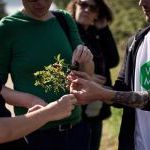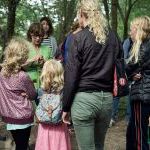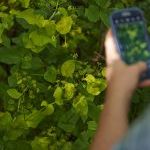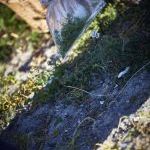Wild Food
The project aims to educate people about collecting edible food from the nature. The project has trained nature guides to help pupils and teachers experience the full potential of gathering and cooking with edible food in the wild. The project has also developed an app that covers nature in Denmark that is accessible for everyone to go collect by themselves. The app is available in Danish and English. The project also has a website that provides a range of information with descriptions of the wild foods available in each season, and recipes on how to cook them.
Website
Useful links
Country
Media
Introducing VILD MAD from madfeed.co on Vimeo.
Useful UK Links
The Woodland Trust provide monthly updates on what is in season, and tips on responsible foraging.
* TOP TIP *
'Research edible wild foods and identify which are available durng different times of the year'
How is the project linked to climate change and sustainability?
The project enables pupils, teachers and the wider population to connect with the wild and enhance their nature-consciousness and understanding of the surrounding environment. Also, it may give people a better understanding of the seasonality and aim to connect people with an understanding of locally available foods.
Who is involved?
Nature guides, teachers, the pupils (when at schools) and the Danish public (through the app).
How are participants involved?
In Vild Mad's (Wild Food’s) educational webpage, teachers are able to access teaching materials covering topics such as food culture and sustainability. ‘Vild Mad’ also connects the schools and teachers with educated nature guides who provide guided tours in the wild. Most remarkable and at the core of how the participants are involved is the wild-food-collecting-app that the project has developed. This app also functions as a guide for the outdoor excursions and everyone can access it for free.
Key steps:
The Wild Food project provides excellent support for schools wishing to find out about food from nature, but you can also explore these themes yourselves.
Step 1: Research knowledge about collecting edible food from nature. Make sure you can carefully identify specimins to know what is safe and what may be harmful to eat! This can also be achieved by connecting with a local expert and information online and in books.
Step 2: Arrange collecting-trips with the pupils (maybe get in contact with suitable nature guides)
Step 3: Cook with the food you have collected
“Wild Foods gives options of doing interdisciplinary courses, Aswell as short monodisciplinary lessons, where both food- culture and sustainability are natural extensions on the described lesson plans. Wild Foods, offers some simple and easily accessible lessons, that can be used as a substantial addition to the overall goal on leaning to be knowing, responsible, ethical and enjoying consumers. I am looking forward to trying it in my classes.”
Helle Brønnum Carlsen – Teacher and lecturer in food literacy, and food reviewer.




